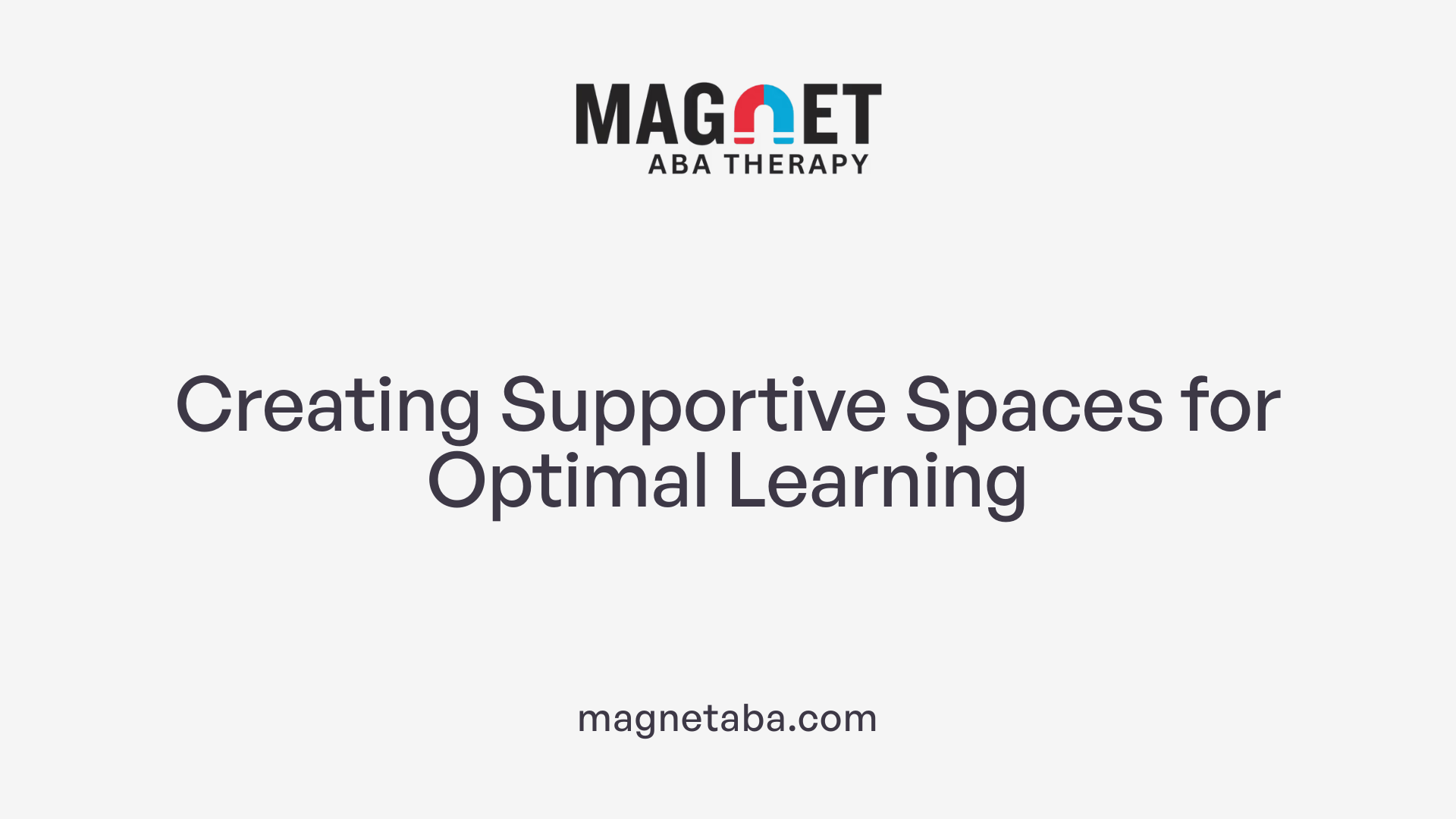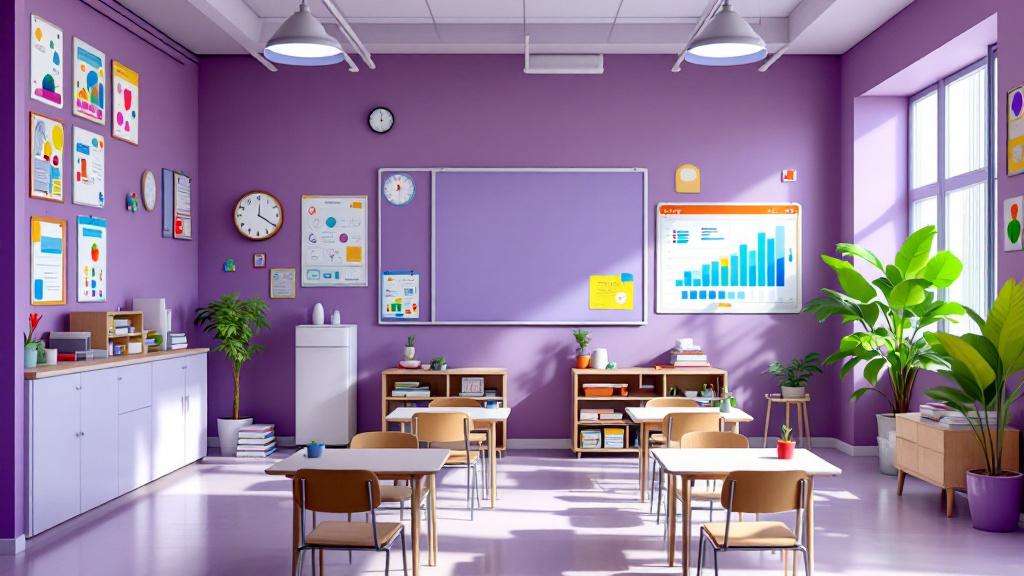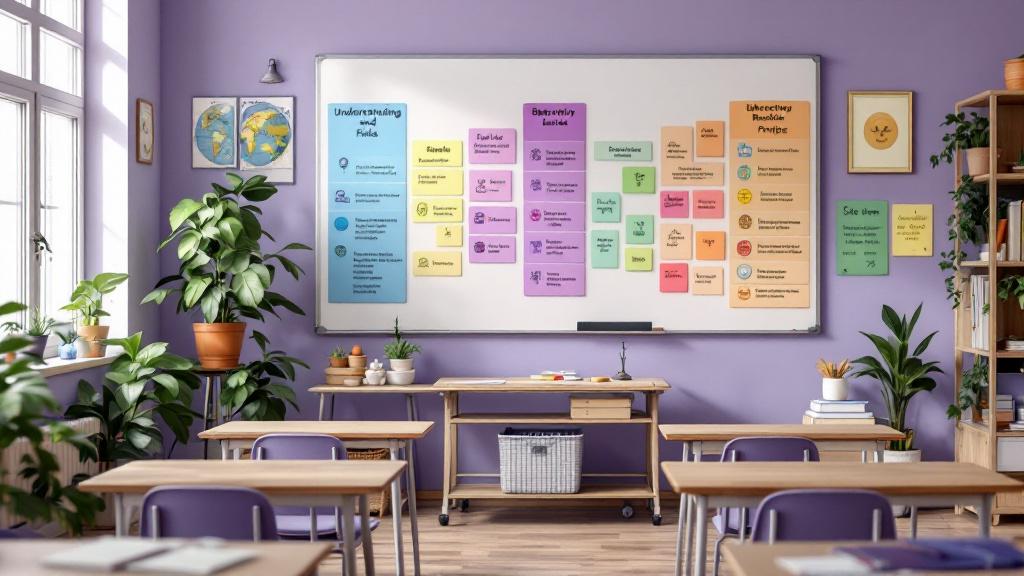Understanding the Foundations of Introducing New Environments in ABA
Introducing new environments in ABA therapy is vital for fostering generalization, independence, and functional skills. This process involves carefully planned strategies rooted in naturalistic teaching principles to ensure that individuals with autism and other developmental disabilities adapt confidently and effectively. By utilizing methods such as Natural Environment Teaching (NET), environmental arrangements, and gradual exposure techniques, therapists and caregivers can create seamless transitions into diverse settings, thus promoting meaningful learning experiences and real-world skills.
What is Natural Environment Teaching (NET): Principles and Benefits

What is Natural Environment Teaching (NET) in ABA, and what are its principles and benefits?
Natural Environment Teaching (NET) is an evidence-based approach used within Applied Behavior Analysis (ABA) to help children develop vital skills in the settings they experience daily. Unlike traditional structured lessons, NET involves teaching in natural environments such as at home, at school, or during community outings. This approach is highly personalized, focusing on the child's interests, routines, and spontaneous interactions.
Core principles of NET include child-led learning, where the child's preferences direct the focus of activities. It makes use of incidental teaching, which capitalizes on naturally occurring opportunities during everyday activities. Reinforcement, often natural and immediate, encourages children to repeat and build upon their new skills. Environmental cues, peer interactions, and familiar routines are integrated to promote learning that resonates with the child's daily life.
The benefits of NET are substantial. It leads to increased motivation because learning is embedded into activities children find engaging. Skills taught in real-world scenarios tend to generalize better across different environments, enhancing independence and practical application. Additionally, NET fosters social engagement, communication, and problem-solving abilities. Overall, this approach makes learning fun and relevant, encouraging children to explore new skills within contexts they already enjoy and access regularly.
Implementing New Environments in ABA: Best Practices and Strategies

How can new environments be introduced in ABA therapy, and what are best practices for implementing environment changes?
Introducing new environments within ABA therapy requires thoughtful planning and strategic implementation to ensure a positive and effective transition for the individual. One effective approach is to use naturalistic teaching strategies that align with the person's daily routines and typical settings. This approach makes new environments more familiar, engaging, and relevant, which encourages spontaneous learning and reduces anxiety.
A common and successful method is gradual exposure. This involves systematically introducing the individual to the new environment in small, manageable steps. For example, starting with brief visits and increasing the duration gradually or focusing initially on specific familiar activities within the new setting. Techniques like incidental teaching and pivotal response training are particularly useful here, as they leverage spontaneous opportunities for learning and motivation.
Utilizing visual supports, such as visual schedules, social stories, and visual cues, can help clarify expectations and routine sequences. Reinforcements, both natural and planned, serve to motivate the individual during transitions and exploration. Prompt fading strategies—gradually reducing prompts as familiarity increases—are essential to promote independence.
Assessing each person's unique needs, interests, and safety considerations is crucial. Customizing the environment and intervention approaches helps ensure comfort and engagement. For younger children or those with communication challenges, ensuring the environment accommodates their sensory preferences and potential sensitivities is vital.
Collaboration among professionals, caregivers, and educators plays a fundamental role. Consistent routines, messaging, and reinforcement across all settings foster skill generalization. Sharing insights, strategies, and progress helps align efforts and reduces confusion or frustration.
In summary, introducing new environments involves a blend of gradual exposure, visual supports, reinforcement, and interprofessional collaboration. These practices help individuals with developmental disabilities adapt successfully, gain confidence, and extend their skills across various settings.
Environmental Arrangements as a Foundation for Successful ABA Sessions

What are environmental arrangements in ABA, and how do they support therapy sessions?
Environmental arrangements in ABA involve strategically organizing the physical space, materials, and social setup to create a supportive learning environment. These arrangements aim to foster desired behaviors while minimizing distractions and potential triggers for challenging behaviors.
Effective environmental arrangements include factors such as the placement of furniture, the organization of learning materials, and the specific location of activities. For example, seating arrangements can be tailored to suit each child's needs—aligning with their comfort, attention span, and sensory preferences—encouraging engagement and cooperation.
By modifying the environment, therapists act as Pivotal Response Training (PRT) or incidental teaching advocates, setting the stage for successful interactions. These setups serve as antecedent interventions—they set the scene before a behavior occurs—by creating predictable, accessible, and stimulating settings.
In practice, thoughtful arrangements can promote communication, social skills, and independence. They allow children to navigate their environment more confidently and safely, which reduces frustration and disruptive behaviors. For instance, organizing a designated area for play and learning materials, or using visual supports to clarify routines, significantly enhances focus and participation.
Across settings—whether at home, school, or community outings—these environmental modifications support consistent learning experiences. They do so by reinforcing therapeutic goals and providing cues that guide appropriate behaviors.
In summary, well-planned environmental arrangements are vital to ABA therapy. They create predictable, engaging, and accessible settings that foster positive behaviors, support skill development, and increase the overall effectiveness of therapy sessions.
Gradual Exposure and Prompting Techniques for Environment Transfer
What are environmental arrangements in ABA, and how do they support therapy sessions?
Environmental arrangements in ABA involve carefully organizing and modifying the physical and social settings to better support learning and behavior. This means adjusting furniture placement, visual cues, and activity materials to create an environment that encourages engagement and reduces any potential distractions or triggers for problematic behaviors.
For example, arranging seating to face a teacher or therapist helps a child focus during instructional moments. Incorporating familiar objects and natural routines within the environment fosters comfort and motivation, making it easier for children to transfer learned skills across different settings.
These arrangements act as important cues or antecedents that set the stage for successful learning. They help create predictable routines and access points for interaction, which are vital for encouraging communication, cooperation, and independence.
Effective environmental arrangements can be used in various settings—from classrooms and therapy rooms to community outings—which can significantly enhance the child's ability to generalize skills beyond structured sessions. By designing supportive and engaging environments, therapists and caregivers can optimize learning opportunities and reinforce positive behaviors.
How do fading prompts and reducing support gradually facilitate environment transfer?
Prompt fading is a strategy used to slowly decrease the level of assistance provided to a child as they begin to independently perform a skill. Initially, prompts such as verbal cues, gestures, or visual supports guide the child's behavior. Over time, these prompts are systematically reduced or withdrawn, encouraging the child to rely on their own abilities and the natural environment.
This gradual reduction helps in transferring the learned skills to new settings. For example, a child who initially needs prompting to say "hello" during a playdate might start to greet peers without prompts after consistent fading. The process ensures skills are not only learned but also maintained and generalized across environments.
A structured fading process involves monitoring the child's performance closely, increasing the interval between prompts, or decreasing prompt intensity, making sure the child remains successful while becoming more independent.
How can incidental teaching and pivotal response strategies support environment transfer?
Incidental teaching and pivotal response training (PRT) are naturally occurring, child-led strategies that emphasize using everyday scenarios to promote communication and skill development.
In incidental teaching, therapists or caregivers take advantage of spontaneous opportunities during daily routines—such as chatting during grocery shopping or during outdoor play—to model and prompt desired behaviors or language. This technique encourages children to initiate interactions, which boosts motivation and makes learning relevant.
Pivotal response strategies focus on targeting core areas like motivation and self-initiated behaviors. For instance, reinforcing a child's interest in a specific activity or object can motivate them to participate more actively, facilitating skill transfer across different environments.
Both methods make skill learning more natural, applicable, and less intrusive, helping children generalize skills outside of structured therapy sessions. They also promote engagement and communication in real-world contexts, which is critical for meaningful learning.
How to monitor progress and adjust strategies?
Monitoring progress involves Regularly assessing the child's performance on targeted skills. This can be done through observation, data collection, and feedback from the child’s environment.
Adjustments are made based on this ongoing data. If a child is not progressing as expected, strategies like increasing reinforcement, modifying prompts, or altering environmental arrangements may be necessary.
Flexibility is vital. For example, if a child's motivation wanes, incorporating preferred activities or modifying routines can re-engage them. Similarly, reducing prompts more gradually might be needed if independence is not developing.
Close collaboration with caregivers and other professionals ensures that strategies remain tailored to the child's evolving needs. This dynamic process helps in successfully transferring skills across settings and achieving long-term developmental goals.
Practical Examples of Implementing New Environments in ABA

What are practical examples of implementing new environments in ABA therapy?
In ABA therapy, applying it in natural settings involves a variety of real-life activities that teach essential skills through the child's daily routines and interests. For example, teaching color sorting during laundry helps children learn classification and sequencing while engaging in a household chore. During bath time, encouraging the child to count objects with bath toys makes learning math interactive and fun.
Following instructions during snack preparation not only builds communication skills but also promotes independence in daily routines. Guided building activities such as blocks or construction sets develop spatial reasoning and problem-solving skills, all within a familiar environment.
Beyond these, social skills can be taught during playground visits, where children learn to share, take turns, or greet peers. Communication during mealtime can improve vocabulary and social interaction, while problem-solving activities during grocery shopping or trips to the bank foster real-world functional skills.
These activities are tailored to the child's individual interests, making learning more engaging and relevant. Incorporating natural reinforcers, like peer interactions or successful completion of a task, motivates children and encourages spontaneous skill transfer.
By embedding teaching moments into everyday routines and community outings, therapists and parents help children generalize their skills across different environments. This approach fosters independence, enhances social and communication abilities, and builds confidence in their ability to navigate the world around them.
Addressing Challenges and Ensuring Successful Environment Introduction

Recognizing environmental distractions and communication barriers
When introducing children to new environments in ABA therapy, it's crucial to identify potential distractions and communication challenges. Environmental distractions, such as noisy or cluttered spaces, can divert a child's attention and hinder learning. Communication barriers, including limited verbal skills or difficulty understanding instructions, also pose obstacles. Recognizing these factors allows caregivers and professionals to plan strategies that minimize disruptions and support effective communication.
Adapting strategies to individual needs, motivation, and safety
Every child has unique needs and motivations, which must be considered when adapting ABA techniques for new settings. Personalizing prompts, reinforcement, and cues ensures engagement and safety. For instance, a child motivated by peer interactions might benefit from social reinforcement during outings. Modifying activities to suit sensory sensitivities, such as reducing loud sounds or bright lights, enhances comfort.
Safety is paramount when exploring unfamiliar environments. Structuring spaces with clear boundaries, providing supervision, and teaching safety rules are essential steps. Incorporating visual supports or social stories can prepare children for transitions, reducing anxiety and promoting positive experiences.
Collaborating with caregivers and professionals
A successful transition requires strong teamwork among caregivers and professionals. Open communication ensures consistent implementation of strategies across settings. Caregivers are trained to reinforce skills at home, while professionals tailor interventions based on ongoing observations.
Collaborative planning might include joint visits to new locations, developing individualized plans for each child, and sharing progress updates. This teamwork fosters a cohesive learning environment, increases the child's comfort, and promotes skill generalization.
Practical examples of implementing new environments in ABA therapy
Implementing new environments involves integrating natural routines into learning. Examples include teaching color sorting during laundry, which links to functional life skills, or encouraging counting with bath toys during bath time. Following instructions during snack preparation enhances communication and independence, while guided building activities develop spatial reasoning.
Other activities include teaching social skills on playgrounds, supporting communication during mealtime, and problem-solving during community outings like grocery shopping or bank visits. These activities combine fun and functional learning, helping children transfer skills across various settings.
More about overcoming challenges in ABA environment introduction
Overcoming challenges requires patience, flexibility, and creativity. Recognizing environmental distractors and adapting the environment to reduce them is vital. For children with communication difficulties, using visual aids or augmentative communication devices can bridge gaps. For motivation issues, tailoring reinforcement to the child's preferences keeps engagement high.
Addressing individual safety concerns and creating a calm, predictable routine can ease anxiety during transitions. Collaboration with caregivers and professionals ensures these adaptations are effective and consistent.
By understanding and addressing these factors, practitioners can foster successful environment introductions, facilitating natural learning and skill development tailored to each child's needs.
Fostering Successful Environment Transitions in ABA
Introducing new environments in ABA therapy requires a thoughtful, individualized approach that combines naturalistic teaching, strategic environmental arrangements, gradual exposure, and caregiver collaboration. By creating authentic, engaging, and predictable settings, therapists can facilitate skill transfer, promote independence, and foster confidence across various settings. Consistent assessment, adaptation, and teamwork are key to overcoming challenges and ensuring that the individual successfully navigates diverse environments, ultimately enhancing their learning experience and quality of life.
References
- How to Implement Natural Environment Teaching in ABA Therapy
- A Guide to Natural Environment Teaching In ABA Therapy
- Natural Environment Teaching (NET) in ABA | Autism Resources
- Understanding Natural Environment Teaching in ABA Therapy
- A Guide to Implementing NETA Techniques in ABA Therapy
- How Natural Environment Teaching (NET) Improves Outcomes
- Exploring Natural Environment Teaching (NET) in ABA
- Natural Environment Teaching (NET) in ABA | Autism Resources












